Les camps sur le sable
Take a walk in Argelès in the footsteps of the Retirada on the ’circuit de la Mémoire’.
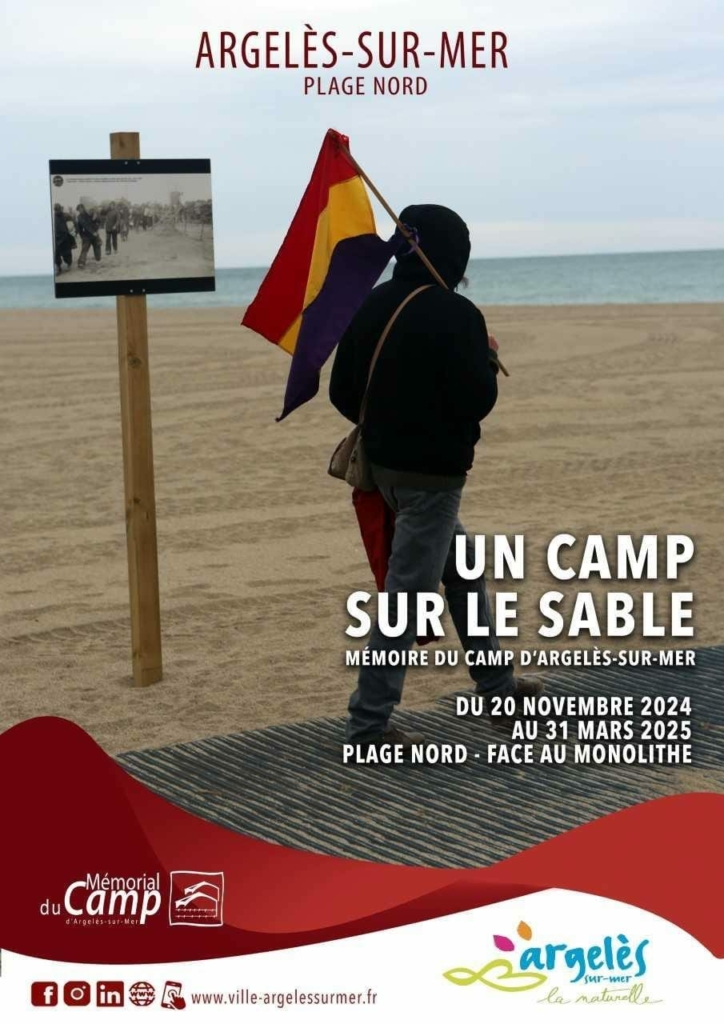 To mark the 85th anniversary of the opening of the camp on the beach, Argelès-sur-Mer and the ‘Mémorial du camp’ invite you to revisit the ’50 photographies du camp’ exhibition on the north beach opposite the Monolith.
To mark the 85th anniversary of the opening of the camp on the beach, Argelès-sur-Mer and the ‘Mémorial du camp’ invite you to revisit the ’50 photographies du camp’ exhibition on the north beach opposite the Monolith.
It was here that the Argelès camp was hastily set up in February 1939, and closed in June 1942
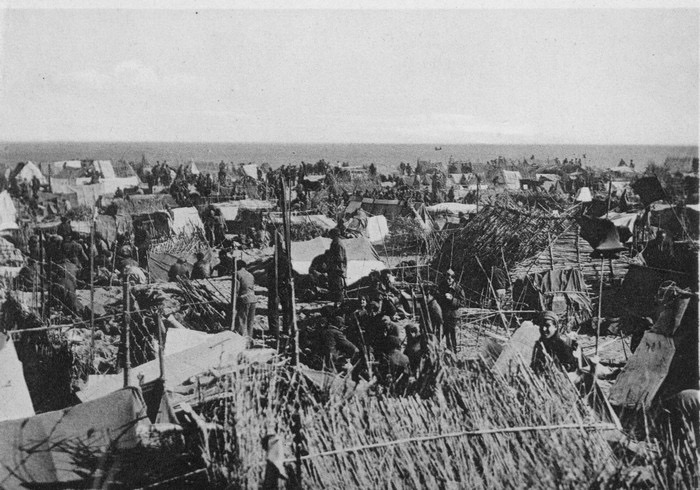
Dictionary definition – Retirada – (catalan)
Withdrawal of troops to a more favourable position to escape the enemy’s superior forces or after a defeat
In memory of the Retirada of February 8, 1939, when the French military set up camps on the beach in Argelès sur Mer to detain between 70,000 and 90,000 Spanish Republican refugees, the town pays homage to these men and women, freedom fighters and victims of fascism in exile, who continued the fight for republican values and democracy.
“We had been fighting for freedom from Fascism for three years. We expected to be given a hero’’s welcome”
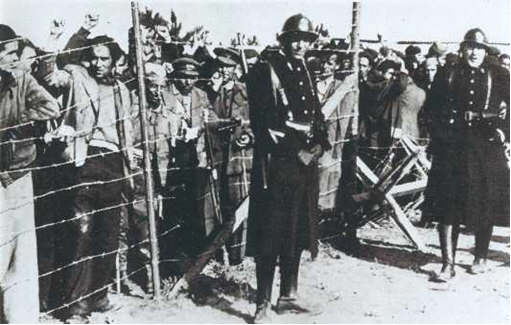
But they were not welcomed with open arms into the Pyrénées-Orientales. Dubbed as the “Reds”, they were admitted as “foreign undesirables”, meaning they could be imprisoned legally. Women and children were initially sent to accommodation centres, men were at first refused entry entirely before eventually being herded into internment camps on the beach at Argelès-sur-Mer, behind barbed wire fences, exposed to the elements, unspeakable squalour, food and water shortage, dysentery and rats.
The repression of the exiles intensified under the German occupation. Thousands of Spanish Republicans perished in the Nazi gas chambers, especially at Mauthausen. Many others, despite their treatment in France, joined the French Resistance and, as ‘Guerilleros Espagnols’, contributed substantially to the Liberation in 1944.
On 15th March 1945 the exiles were finally granted the official status of ‘Political Refugees’ and today a third of the Languedoc-Roussillon’s present-day population are descendants of these Spanish refugees.
Stage 1 : Le monolithe (rue des Dunes – Beach)
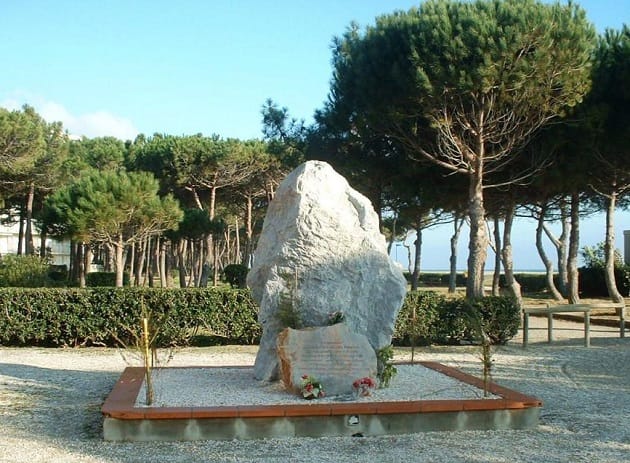
Unveiled in 1999, this monument marks the entrance to the camp in Argelès-sur-Mer and honours the Spanish Republicans imprisoned there from February 1939.
Stage 2 : la plaque nord (near the parking de la Marenda – Beach)
Marks out the borders of the former camp.
Stage 3 : le cimetière des Espagnols (avenue de la Retirada)
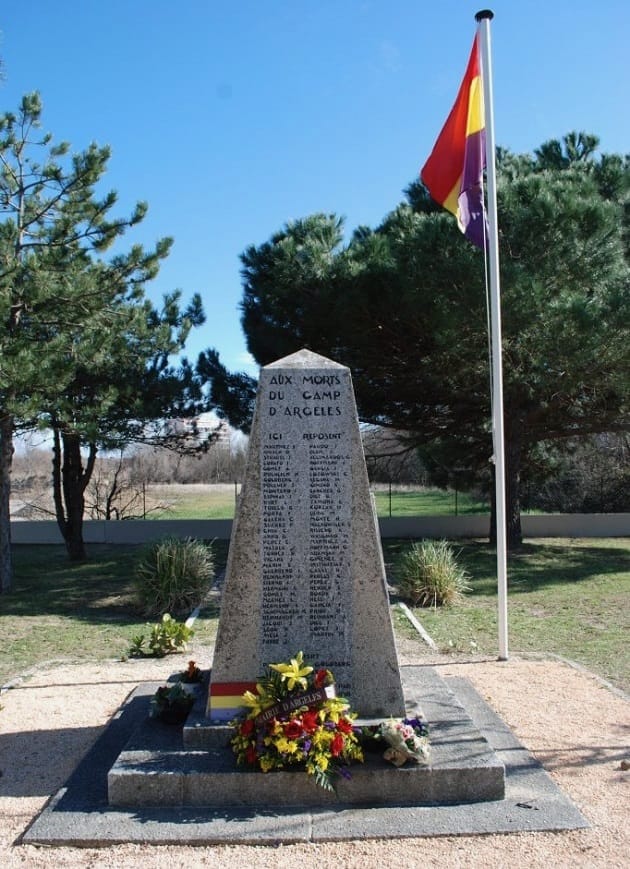
From the opening of the camp in February 1939, many deaths were recorded. A private land owner handed over a plot of land to the Mairie to be used as the camp cemetery. It was later flooded and destroyed by the terrible floods of 1940.
Today, all that is left is a stone put up in the 1950s, engraved with the names of those who died in the camp during their internment, and a tree dedicated to the 70 children aged under 10 who also died in the camp.
Stage 4 : Le Mémorial du camp d’Argelès-sur-Mer
At Chateau Valmy, on the first floor of the espace Jules Pams, is a permanent exhibition and reminder of this dark period.
Divided into two zones symbolizing Spain and France, large panels explain the Civil war in French, Spanish, and Catalan with maps, interactive timeline, and an interesting look at the way in which the media covered this highly publicized conflict.
Open all year round from Tuesday to Saturday from 14h to 18h. Closed on public holidays from October to May and between Christmas and New Year
Free Entry for individuals.
Access disabled .
“I believe we shared something else… the chance to make one grand and uncomplicated gesture of personal sacrifice and faith, which might never occur again … few of us yet knew that we had come to a war… to be led by brave but bewildered amateurs. But for the moment there were no half-truths and hesitations, we had found a new freedom, almost a new morality, and discovered a new Satan- fascism.”
Laurie Lee, English Poet and Novelist
